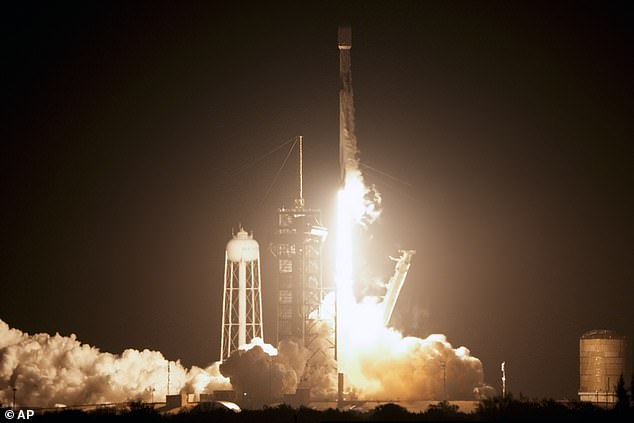Elon Musk’s SpaceX successfully launched a rocket in the early hours of Thursday morning from the Kennedy Space Center, kicking off the first American moon landing mission since 1972.
It arrived shortly after SpaceX Falcon with an unknown payload launched from Cape Canaveral in Florida on Wednesday afternoon. Minutes after the lunar lander took off, SpaceX confirmed that Falcon completed the launch and landing.
The SpaceX doubleheader came on the same day it was revealed that members of Congress were aware of Moscow’s plan to place a nuclear weapon in space to target and destroy satellites the world depends on.
NASA, the main sponsor with onboard experiments, hopes for a successful lunar landing next week as it seeks to boost the lunar economy ahead of astronaut missions in the next decade.
SpaceX’s Falcon rocket lifted off in the middle of the night, sending Intuitive Machines’ lunar lander on its way to the Moon, 230,000 miles away.
Elon Musk’s SpaceX successfully launched a rocket in the early hours of Thursday morning from the Kennedy Space Center, kicking off the first American lunar landing mission since 1972.
Intuitive Machines nicknamed its lander after Homer’s hero in ‘The Odyssey’, or ‘Odie’ for short.
—Good luck, Odysseus. Now let’s make history,” said Trent Martin, vice president of space systems.
If all goes well, a landing attempt would occur on February 22, after a day in lunar orbit.
Only five countries (the United States, Russia, China, India and Japan) have achieved a moon landing and no private company has done so yet.
The United States has not returned to the lunar surface since the Apollo program ended more than five decades ago.
“There have been many sleepless nights preparing for this,” Intuitive Machines co-founder and CEO Steve Altemus said before the flight.
The Houston-based company aims to place its six-legged, 14-foot-tall lander just 186 miles from the Moon’s south pole, equivalent to landing inside Antarctica on Earth.
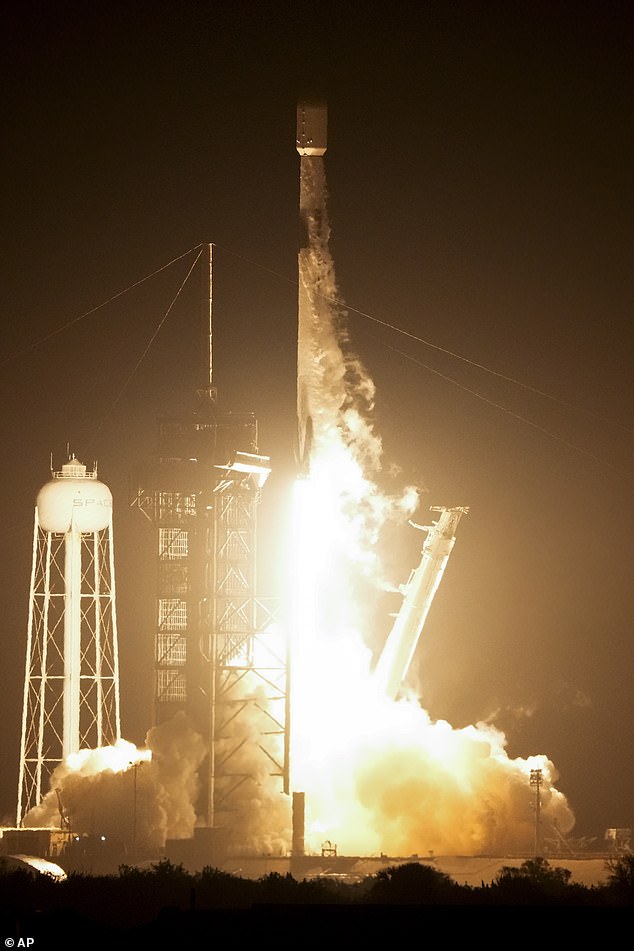
SpaceX’s Falcon rocket lifted off in the middle of the night, sending Intuitive Machines’ lunar lander on its way to the Moon, 230,000 miles away.

Intuitive Machines nicknamed its lander after Homer’s hero in ‘The Odyssey,’ or ‘Odie’ for short.
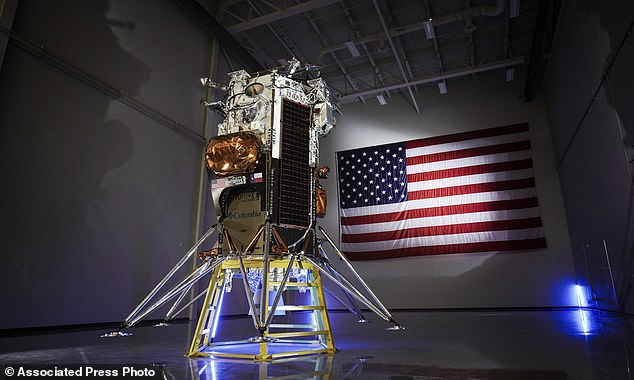
This photo provided by Intuitive Machines shows the company’s IM-1 Nova-C lunar lander in Houston in October 2023.
This region, full of craters and treacherous cliffs but potentially rich in frozen water, is where NASA plans to take astronauts later this decade. The space agency said its six navigation and technology experiments on the lander can help pave the way.
NASA’s first spacecraft in its commercial lunar delivery service, Astrobotic Technology’s Peregrine lander, stumbled shortly after liftoff in early January.
A fuel tank rupture and massive leak caused the spacecraft to miss the moon and return through the atmosphere 10 days after launch, breaking up and burning over the Pacific.
Others reached the moon before being shipwrecked.
An Israeli nonprofit’s lander crashed in 2019. Last year, a Tokyo company saw its lander crash into the moon, followed by Russia’s crash landing.
Only the United States has sent astronauts to the moon; Gene Cernan and Harrison Schmitt of Apollo 17 closed the program in December 1972. That was it for American moon landings until Astrobotic’s brief attempt last month.
NASA is paying Intuitive Machines $118 million to take its latest set of experiments to the moon.
The company also landed its own clients, including Columbia Sportswear, which is testing wire jacket fabric as thermal insulation in the lander, and sculptor Jeff Koons, who is shipping 125-inch-sized moon figures in a transparent cube.
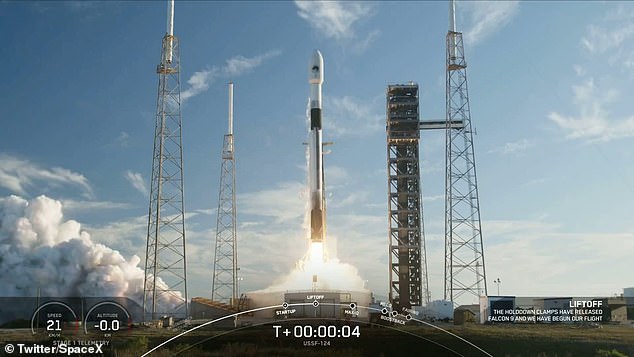
Earlier Wednesday, a SpaceX Falcon carrying a mysterious payload launched from Cape Canaveral in Florida on the same day it was revealed that Russia wants to deploy a nuclear weapon in space.
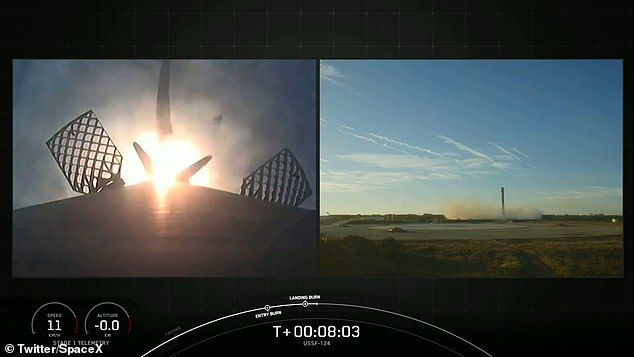
The booster touched down at the SpaceX landing zone eight minutes after launch, completing its seventh mission, according to Space Force officials, who remained silent about the mission until this morning.
The lander also carries Embry-Riddle Aeronautical University’s Eaglecam, which will take photographs of the lander as they both descend.
The spacecraft will stop operating after a week on the surface.
The mission comes as House Intel Chairman Mike Turner of Ohio said members of Congress had been informed of a Russia-related threat.
It later emerged that it was linked to Moscow’s plan to place a nuclear weapon in space to attack and destroy satellites on which the world depends. ABC News reported.
Turner asked the president to declassify the information so lawmakers could discuss the ramifications of the ominous warning that sparked a White House response and furious speculation.
Moscow has already demonstrated how lethal it can be from space by testing a lethal-impact anti-satellite missile in 2021.
Russia smashed a defunct spy satellite launched in 1982 into 1,500 pieces of debris in the attack and sparked fury around the world.
In 2020, Moscow fired an anti-satellite weapon from its Cosmos 2543 satellite while in orbit.
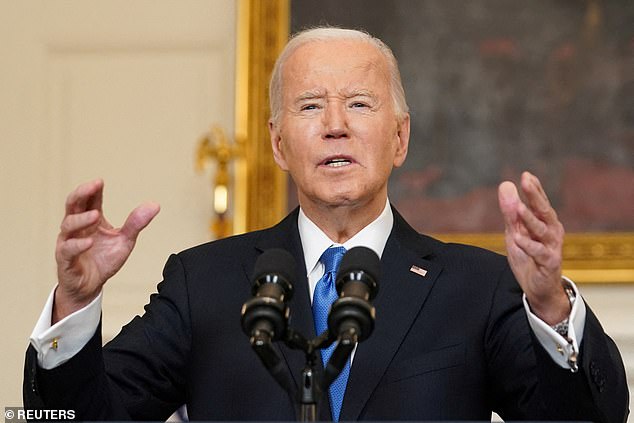
A top Republican was warned there is a “serious threat to national security” in a cryptic statement demanding President Joe Biden declassify all related information.
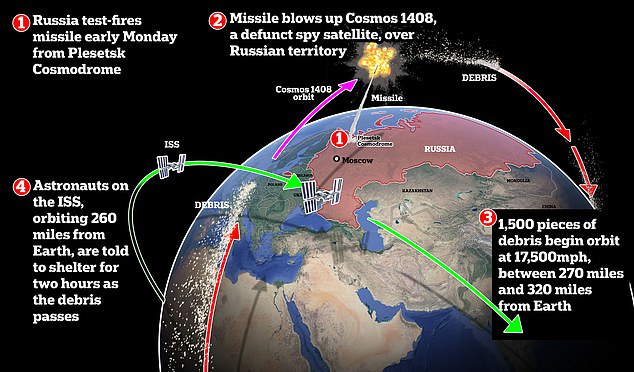
Russia blew up one of its own satellites in 2021 with a missile. The destroyed target was Cosmos 1408, a defunct spy satellite launched in 1982, causing a field of 1,500 remains that endangered the ISS crew.
Vladimir Putin has also threatened the West with his deadliest hypersonic missile yet, which could accelerate into space and hit multiple targets on the ground.
The nuclear-capable Avangard missile, which can reportedly hit targets at 27 times the speed of sound, is seen in new footage installed in an underground launch silo in Russia’s Orenburg region.
According to Moscow, the 20,000 mph missile with a hypersonic glide vehicle will be able to leave Earth’s atmosphere before reaching any target in the world in less than 30 minutes.
Members of Congress or US allies will not be allowed to speak openly about the threat or work together on it until the report has been declassified.
They can review information related to “destabilizing foreign military capabilities” in a secure location on Capitol Hill today and tomorrow.
“Today, the House Permanent Select Committee on Intelligence made information about a serious national security threat available to all members of Congress,” Turner said.
“I request that President Biden declassify all information related to this threat so that Congress, the Administration, and our allies can openly discuss the actions necessary to respond to this threat.”
Rep. Jason Crow, D-Colo., was one of the first lawmakers to see the documents at the SCIF on Wednesday afternoon.
He told reporters that the threat “is not an immediate crisis, but certainly something that we have to take very seriously.”
‘There are a lot of very volatile things we have to address. This is one of them,” he added.

